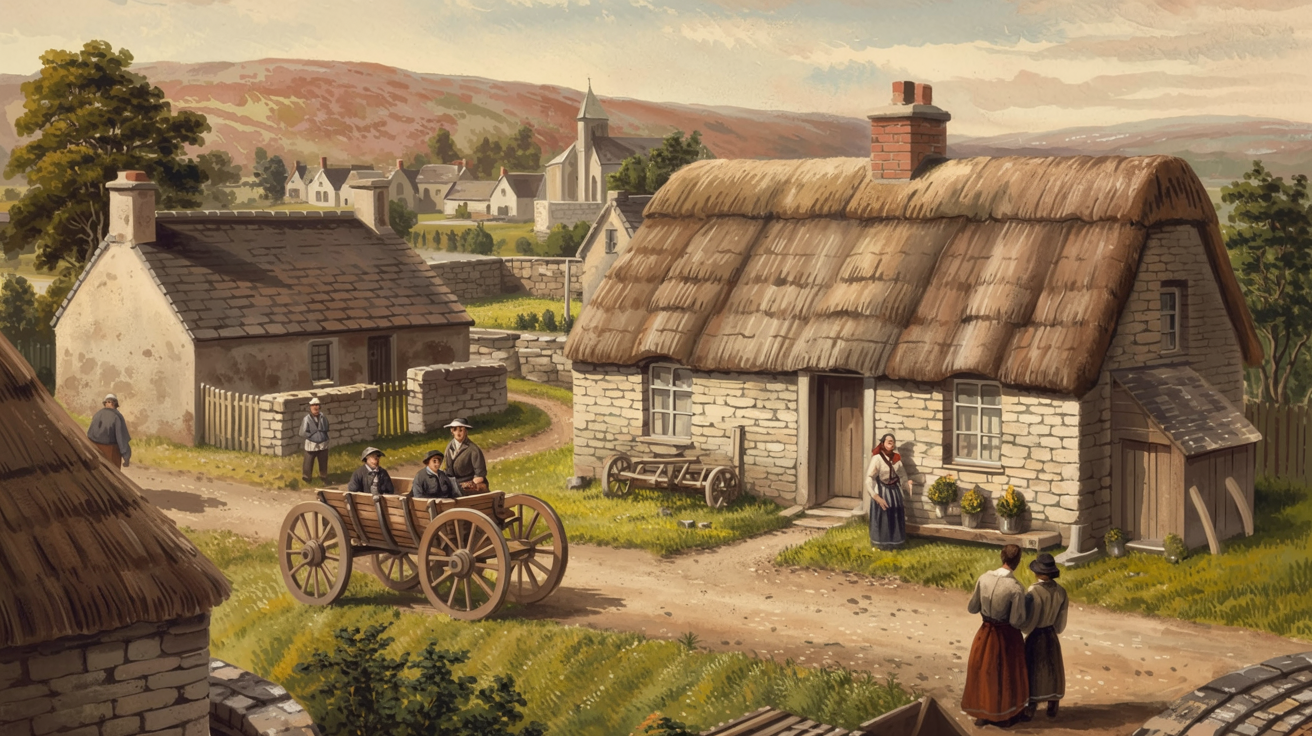Ever stared at a family tree and wished you could actually see what your ancestors’ lives looked like?
Well, now you can.
I just watched an incredible webinar that’s changing how we visualize family history. It’s game-changing stuff.
The AI Revolution in Genealogy
Legacy Family Tree Webinars is pioneering something special with their AI for Genealogists series. Their latest offering, “Picture the Past: An Introduction to AI Images for Family Historians,” blew me away.
Steve Little and Mark Thompson are the real deal.
Steve brings his linguistics and natural language processing expertise as the AI program director for the National Genealogical Society.
Mark, a professional genealogist and public speaker, specializes in applying AI to genealogy work.
Together, they host the Family History AI Show podcast, helping bridge the gap between high-tech tools and family research.
How AI Image Generation Actually Works
Here’s the coolest part. You can create images just by typing descriptions!
The tech starts with random static (like an old TV) and builds an image pixel by pixel based on your words. It’s like magic, but it’s science.
Really.
These tools have been around longer than you might think – the first image generators appeared in early 2022, before ChatGPT took over the world.
Getting Started Is Surprisingly Simple
You don’t need a computer science degree. Just describe what you want to see!
Want to visualize your ancestor’s arrival in colonial Virginia? Type it in. The AI does the rest.
Different platforms create different styles. Some make photorealistic images (like Grok), while others create more painterly versions (like Google’s Gemini). Each has its own strengths.
The Power of Photorealistic Images
AI can now create images so realistic they’re almost indistinguishable from photographs. Mark demonstrated this with a farm scene in 1880s Ontario.
Important warning though: Always label AI-generated photorealistic images! Future generations could mistake them for actual historical photographs.
Editing Made Easy
One of the most useful features is selective editing. Got an image that’s almost perfect but has a random person in the background? You can highlight just that area and remove them!
Text remains challenging for AI (those alphabet blocks were a mess), but even that’s improving rapidly.
The Tools You Should Know
There’s an expanding universe of AI image generators, but these are the major players:
- ChatGPT/DALL-E (from OpenAI)
- Gemini/Imagen (from Google)
- Grok (from X, formerly Twitter)
- MidJourney
Each has different strengths in image styles, safeguards, and editing capabilities.
Practice Makes Perfect
Your first attempts might be frustrating. That’s normal!
After 5-10 hours of practice, you’ll get comfortable. After 20 hours, you’ll be creating amazing images.
The key is experimenting with different prompts – both technical descriptions and emotional/metaphorical ones. Don’t be afraid to ask the AI itself for help creating better prompts.
My Reaction: Mind = Blown
The host Jeff Rasmussen demonstrated the tools live during Q&A, creating an image based on his great-great-grandmother’s diary entry about arriving in Oregon by covered wagon. In minutes, he had a beautiful visualization of a scene previously only described in text.
When challenged to make it photorealistic, the AI transformed it instantly.
Even more impressive – he tried restoring a damaged photo of an ancestor. The results were stunning but raised important ethical questions about accuracy versus enhancement.
The image at the top of this post was created with AI. I used Ideogram and typed in: “Leitrim, Ireland in the 1850s. photorealistic”.
Don’t Miss This Webinar!
This webinar is currently available for members of Legacy Family Tree Webinars.
If you’re interested in genealogy and want to explore how AI can bring your family history to life visually, this is absolutely worth subscribing to and watching.
The series includes multiple AI-focused webinars, with more coming during their upcoming 24-hour genealogy webinar marathon.
Go watch it now and start bringing your family history to visual life!



Thanks so much. I’ve gotten some helpful info from your emails.